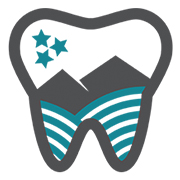COSMETIC DENTISTRY
Porcelain Crowns
Invisalign
Teeth Whitening
Dental Bridges
Dental bridges are fixed, non-removable appliances that are appropriate for replacing missing teeth. There are many types of bridges available, and speaking with a dental professional is the best way to determine the most effective option for your specific and unique situation. Traditional bridges are most popular, using porcelain fused to metal to create a restoration that includes crowns for bonding over adjacent teeth and pontics (false teeth) to fill the gap left behind.
Dental Veneers
Dental veneers are thin custom made shells that cover the front surface of your tooth to improve their appearance. They are made of tooth colored materials and can be used to improve the color of teeth that have been worn down or stained. Alternatively, they can be used to improve the shape or size of the tooth.
Types of veneers:
There are two types of veneers that are commonly used. Porcelain veneers are more durable, and resist stains better. The properties of the material also help create a very natural tooth look. Unlike porcelain veneers, composite resin veneers are not made in a laboratory, but instead directly applied to the teeth. They typically have a shorter life span, and are less expensive.
When should you consider dental veneers?
You can talk to your dentist about dental veneers if
- Your teeth are stained or discolored
- Your teeth are crooked or misshapen
- Your teeth have spaces between them
- Your teeth are broken or chipped
How it’s done:
Two visits to your dentist are typically required for porcelain veneers. At the first visit, three important steps are completed. First, your teeth are prepared to be fitted with a veneer, which will involve trimming a portion of the tooth so the veneer can be bonded on top. Secondly, an impression is taken of your teeth or tooth which will be sent to a laboratory to prepare the veneer. Finally, you may receive a temporary veneer depending on how much of your tooth structure was removed. This temporary veneer will protect your tooth while the permanent veneer is prepared at the laboratory.
At the second visit, the temporary veneer, if you received one, will be removed. Then, the new veneer received from the laboratory will be checked to see if it fits well. It’s best not to adjust porcelain veneers after they are bonded to your teeth, so any adjustments will be made beforehand. Once you and the dentist are satisfied with the look and feel of the veneer, it will be bonded to your tooth.
Dental Bonding
Dental Bonding is a restoration procedure in which a tooth-colored resin is bonded to a tooth and cured with an ultraviolet light. Bonding is faster and less expensive than veneers or crowns, and can be a good option to make small cosmetic improvements to your teeth. Unlike veneers and crowns, bonding can be done within one office visit since nothing has to be custom made by a dental laboratory. Additionally, the procedure typically requires removing less of the tooth enamel compared to veneers and crowns. However, since bonding typically doesn’t last as long as other forms of restoration and is less resistant to stains, it is used more often for small cosmetic touch ups rather than major restorations.
How it’s done:
The bonding procedure typically requires between 30 to 60 minutes to complete per tooth. First the dentist determines exactly what color shade your teeth are to select a resin that will blend in naturally. Once this is done, the dentist will prepare the tooth so the bonding material will adhere easier. This involves roughening the surface of the affected tooth and applying a liquid conditioner. Once this is complete, the dentist will apply the resin to the tooth, and cure it in place using an ultraviolet light. Finally, the dentist will apply the finishing touches by shaping and polishing the resin for a good fit.
Dental Inlays and Onlays
Dental inlays and onlays are a more conservative approach to tooth restoration than full crowns. The are used to repair rear teeth that have mild to moderate tooth decay, or for cracked teeth where the damage does not warrant a dental crown. Porcelain, composite resin and sometimes gold is used to create inlays and onlays. Inlays refer to those procedures where the bonded material is limited to the center of the tooth, while onlays refer to those procedures where the bonded material can extend further to one or more cusps of the tooth.
What are the benefits of inlays and onlays?
Natural look: Inlays and onlays have a natural tooth color that makes them virtually invisible compared to metal fillings.
Great fit: Inlays and onlays will not expand or contract based on temperature like metal fillings.
Longevity: Inlays and onlays can last up to thirty years, longer than any other type of filling.
Minimal tooth structure removed: Inlays and onlays require the minimal removal of a tooth’s surface, helping to preserve the maximum amount of healthy tooth structure while restoring decayed or damaged areas.
How it’s done:
Typically, two visits are required for the placements of inlays and onlays. In the first visit, your dentist will take an impression of your tooth, which will be sent to a lab to create the permanent inlay or onlay. Before you leave, the dentist will fit your tooth with a temporary inlay / onlay to keep the tooth protected between visits. During your second visit, the dentist will remove the temporary protective material and fit your tooth with the permanent inlay or onlay received from the lab.

